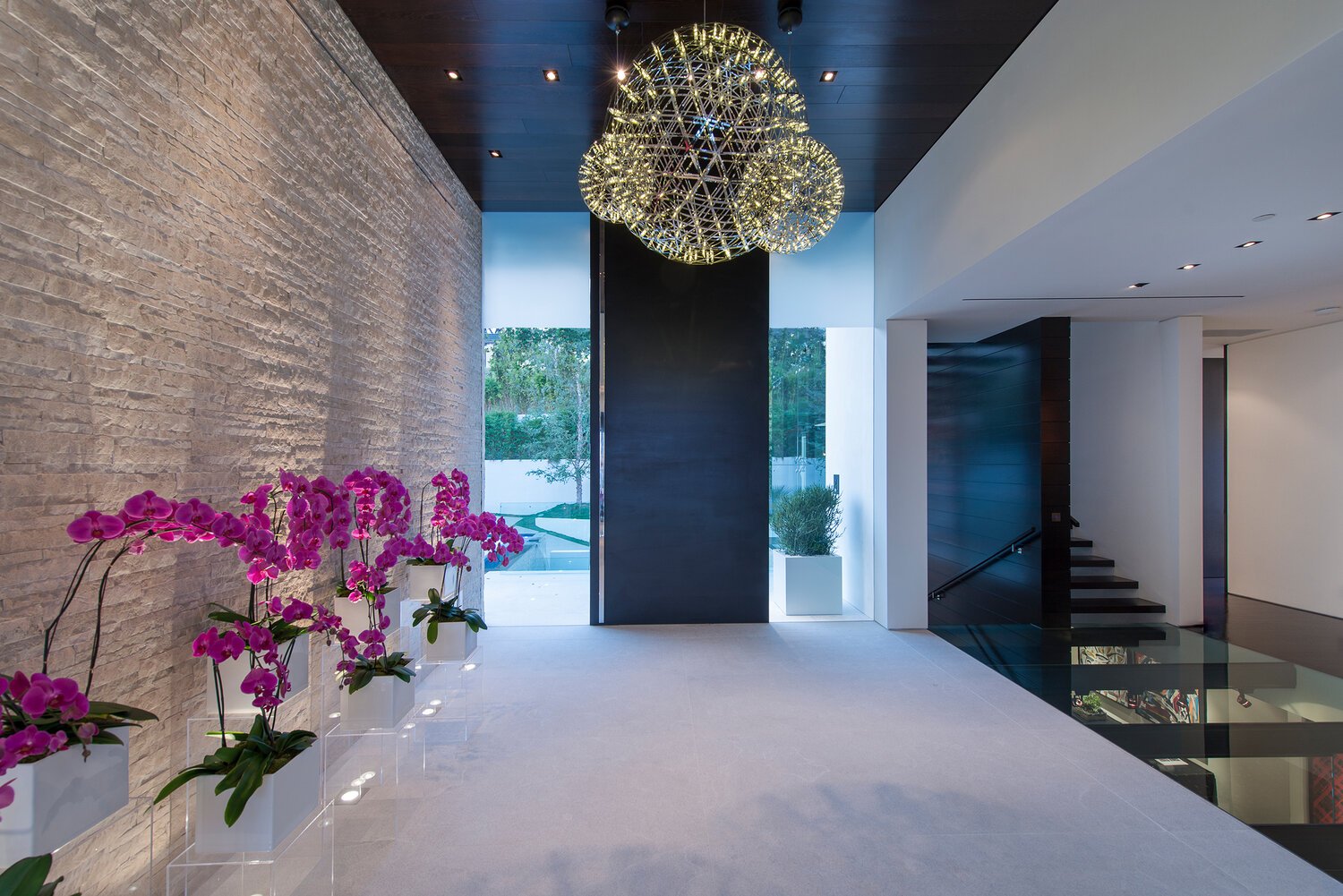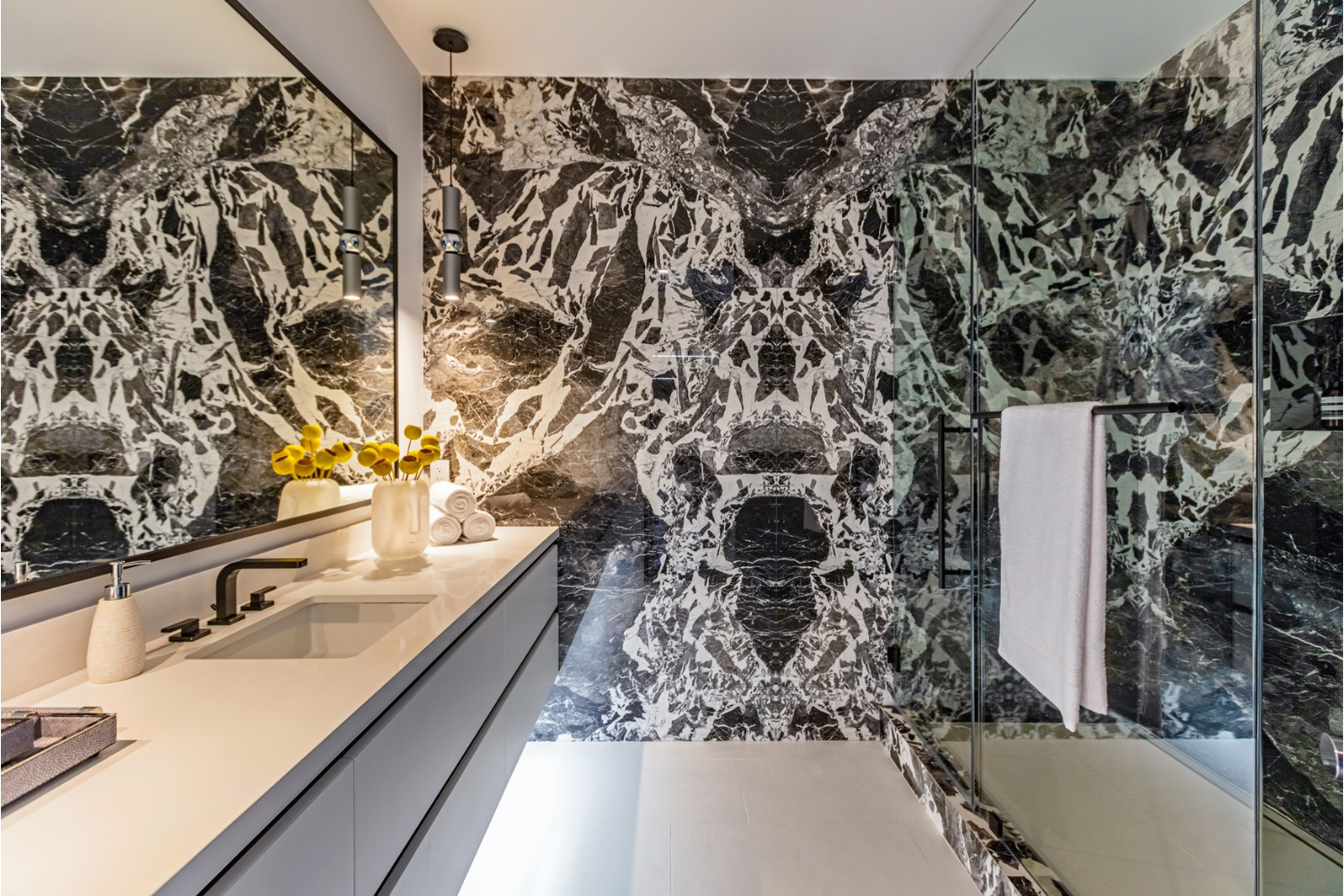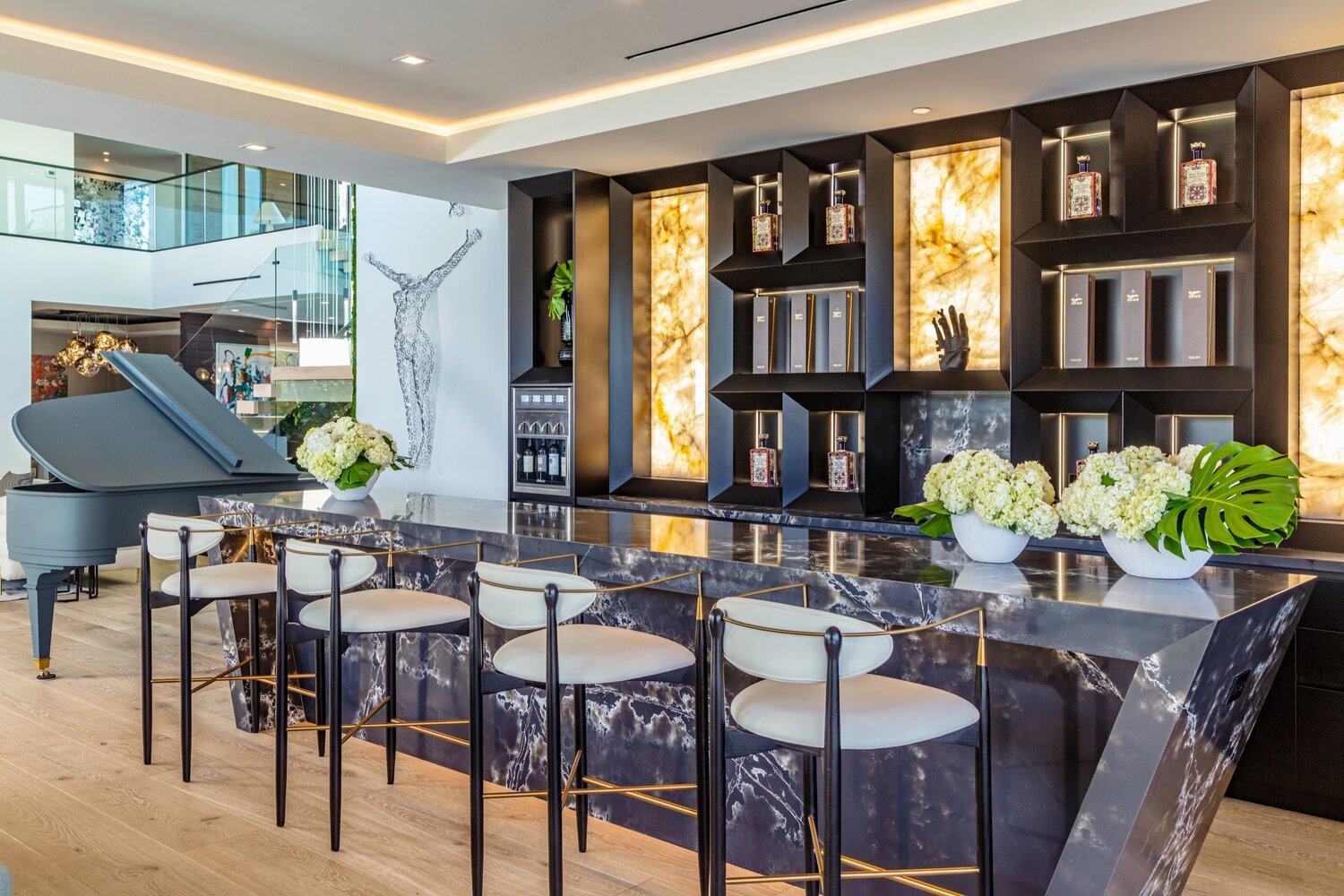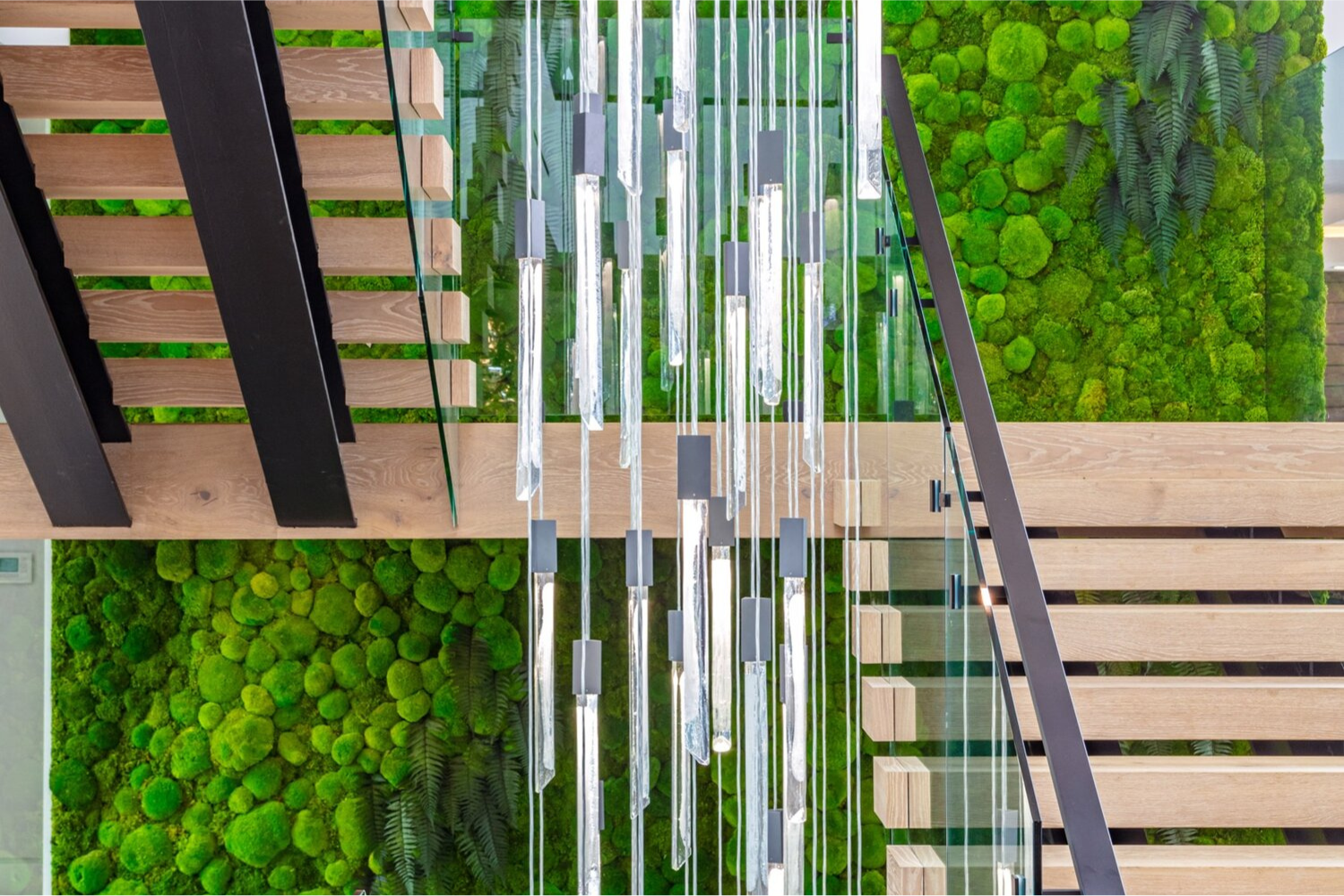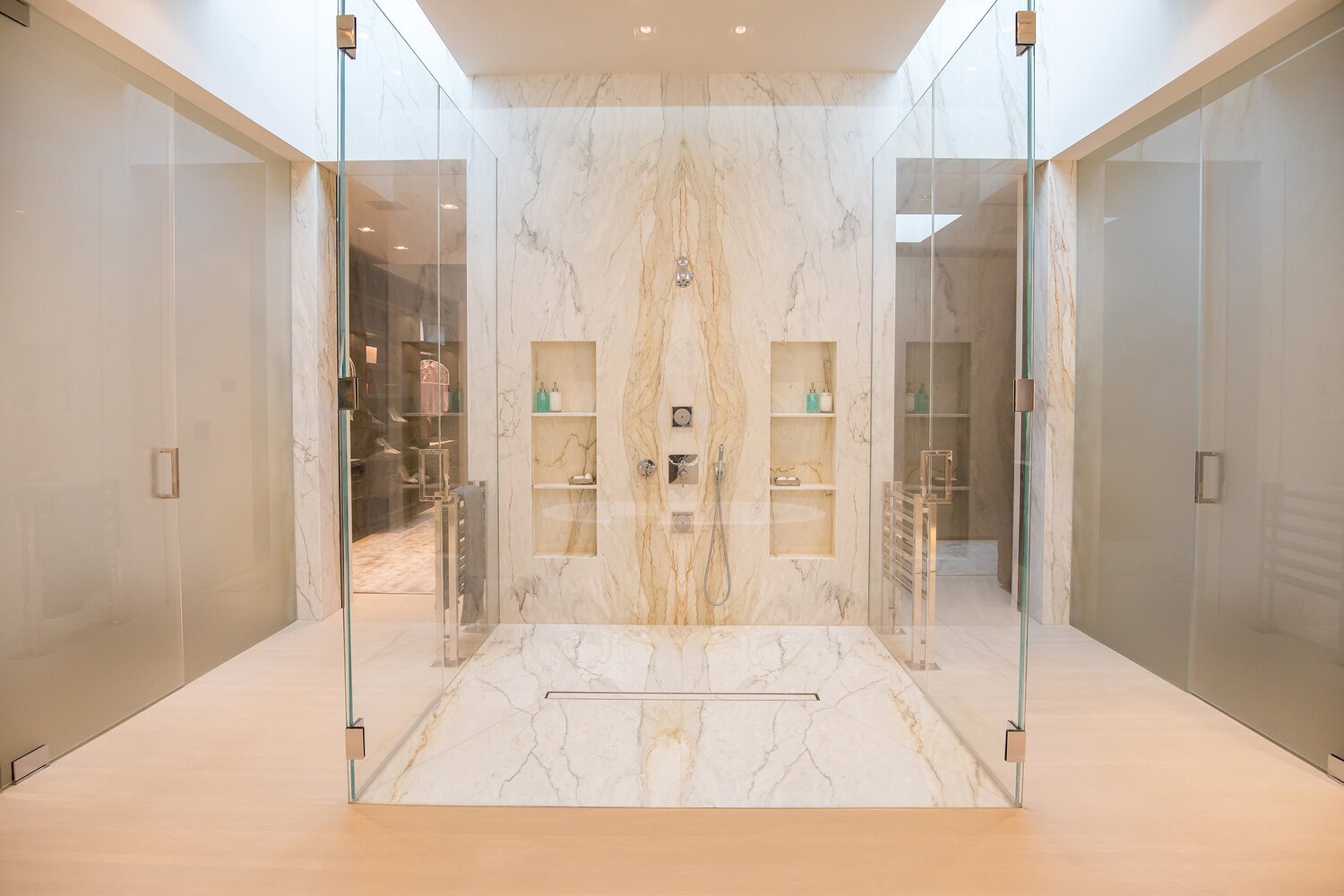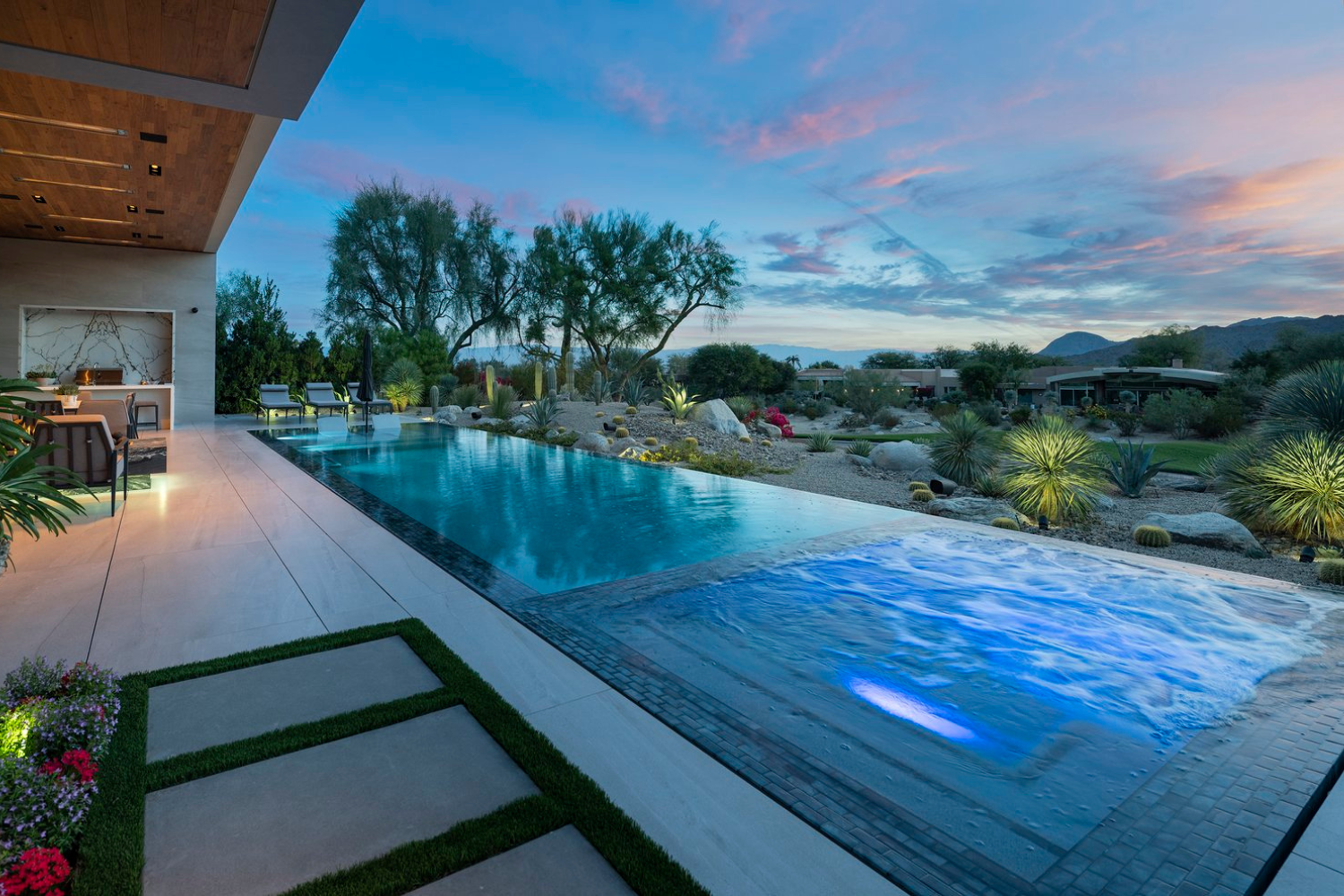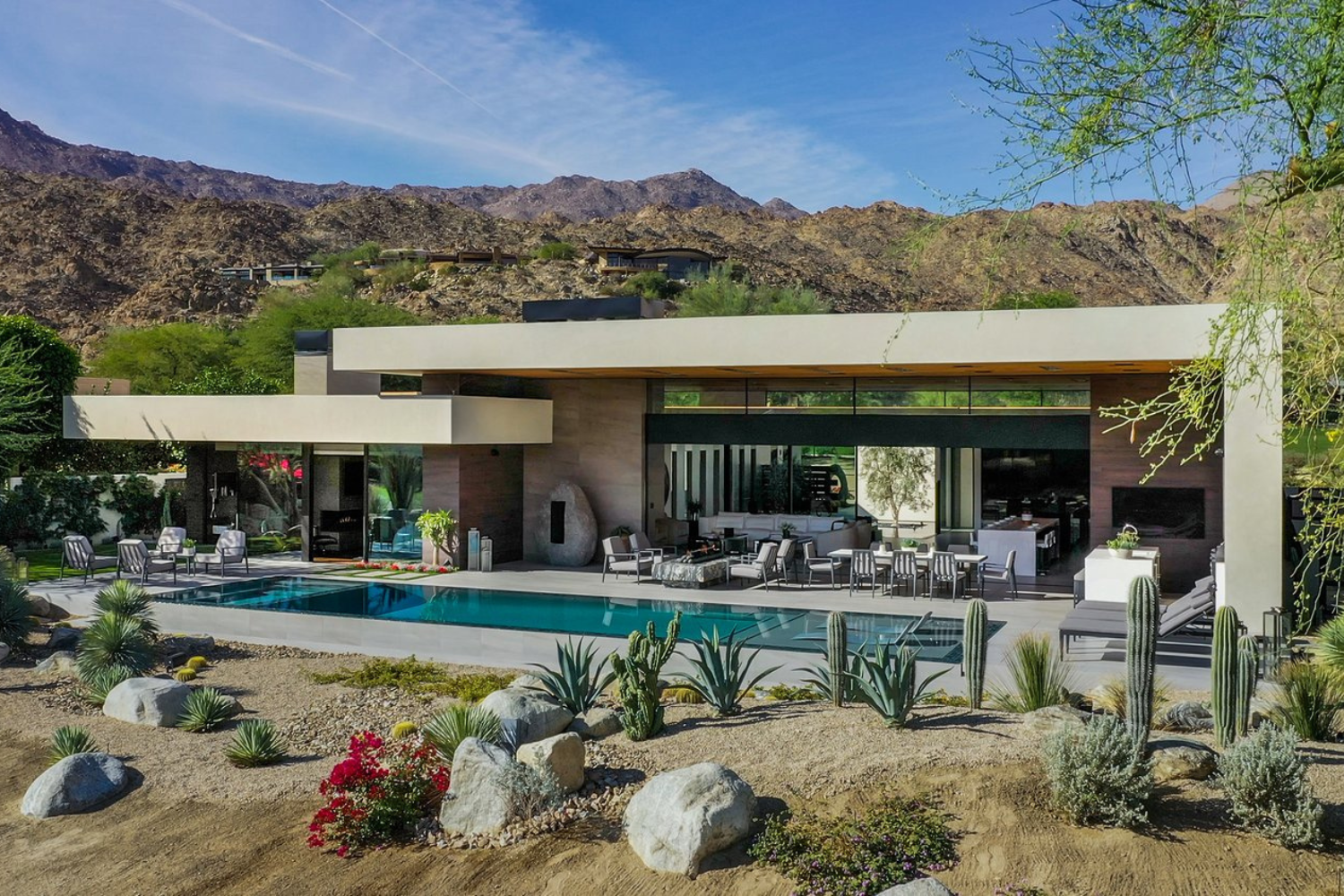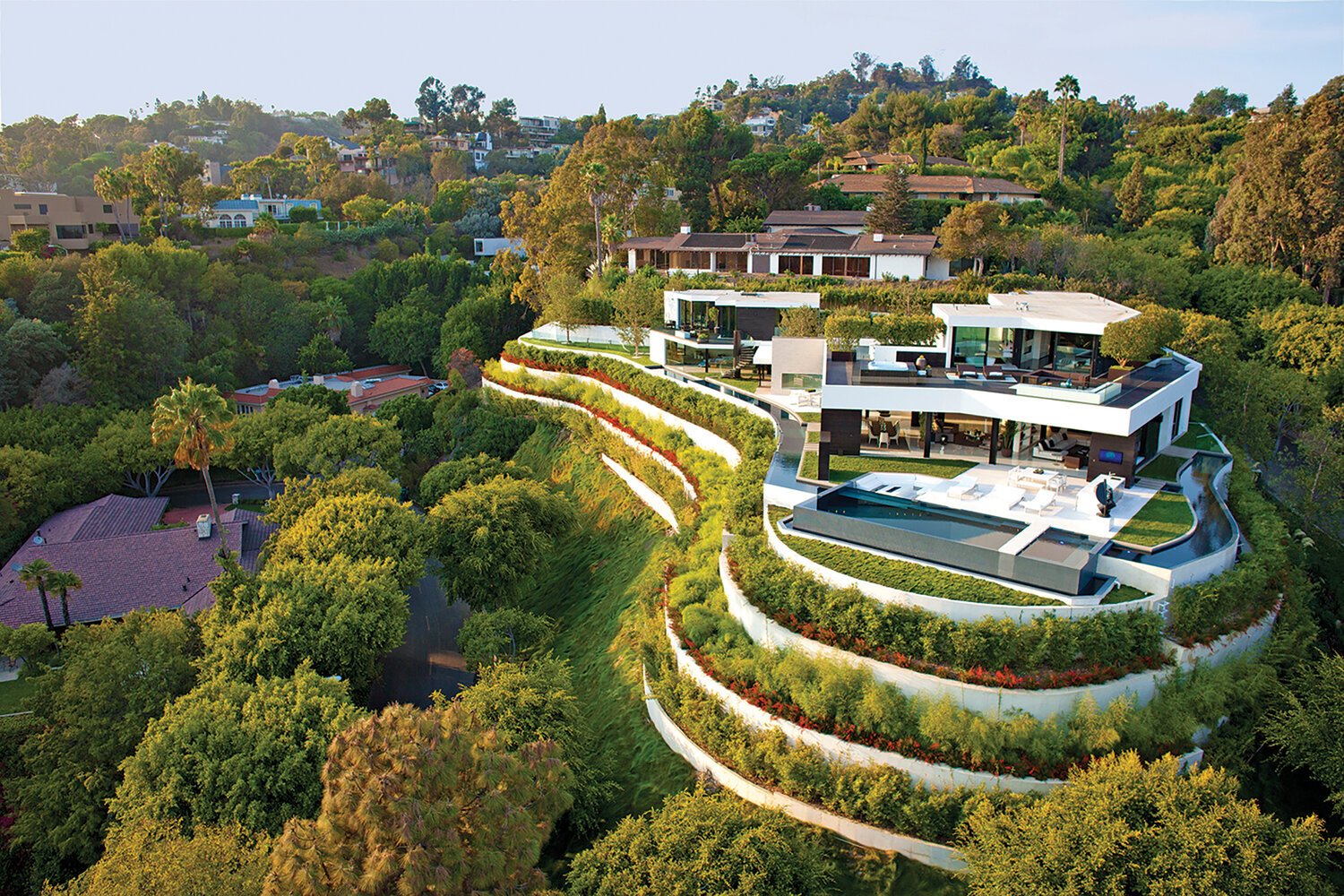The Nature of Biophilic Design - Part II
We continue our exploration of biophilic design, its benefits, and the ways we incorporate this practice into our modern resort style homes.
Organic Materials, Textures, & Shapes
Minimally processed elements and materials directly derived from nature, such as wood, stone, stacked slate, and marble add the textures, patterns, colors, and beauty of the natural world to indoor spaces. Their presence supports the biophilic desire to be close to nature, and they add a contemporary earthiness to a home’s decor. Natural objects like these aren’t static, they weather and age, gaining a patina that recalls the passage of time, and their authentic presence adds a rich and textured warmth to indoor and outdoor spaces. Organic shapes in furniture and decor inspired by the variance of form found in nature add a whimsical touch to modern interiors, which can be both mentally stimulating and creatively inspiring.
At our Laurel Way House in Beverly Hills, Los Angeles, a textured stone wall in the foyer contrasts with the floating glass floor and window walls. A modern chandelier reminiscent of a golden sea urchin, or flower head, hangs above.
Photo by William MacCollum
At Serenity, a modern home in the California desert, a marble shower and floor cool the primary bathroom.
Photo by William MacCollum
Photo by William MacCollum
In one of the guest bathrooms, textured wall tiles appear like river stones.
Photo by William MacCollum
Striking natural elements are found throughout our Bundy Drive House, from the marble wall designs in the bathrooms and home gym, to the marble bar with glowing backlit onyx on the main floor, and the three story living green wall with indoor cactus garden behind and below the stairs. Living plants in indoor spaces not only help to improve the air quality by absorbing CO2, removing toxins, and adding fresh oxygen, but they’ve been shown to help create stress-free environments and lift moods.
Photo by Simon Berlyn
Photo by Simon Berlyn
Photo by Simon Berlyn
Photo by Simon Berlyn
Photo by Simon Berlyn
Photo by Simon Berlyn
Photo by Simon Berlyn
A wall sized aquarium separating the kitchen and dining room at our Bundy Drive House brings the ocean inside, with colorful sea plants that float in 800 gallons of water.
Photo by Simon Berlyn
At Bighorn, stone sculptures, marble wall details in the indoor and outdoor kitchens, and marble bathrooms add an earthy luxuriousness to the modern desert home.
Photo by William MacCollum
Photo by William MacCollum
Photo by William MacCollum
Photo by William MacCollum
Photo by William MacCollum
Photo by William MacCollum
Photo by William MacCollum
Photo by William MacCollum
An illuminated marble wall in the primary bathroom, rough stacked slate stone in the dining room, and a living indoor tree in the foyer add visual texture to our Benedict Canyon House.
Photo by William MacCollum
Photo by William MacCollum
Photo by William MacCollum
A marble shower presenting a beautiful natural design stands out, and draws one in, in the airy, minimalist primary bathroom at our Trousdale House. The covered entrance walkway is grounded by a textured stacked stone wall.
Photo by Jason Speth
Photo by Jason Speth
Interior designer Livia Tomiselli of LTA+D used a textured sandstone for interior and exterior walls at our Coral House. She custom designed the pattern of each wall, had the pieces fabricated in Italy, numbered, shipped, and then reassembled on site. The stone blends well with other natural materials throughout the house, including teak and steel.
Photo by Luca Girardini
Photo by Luca Girardini
Livia also designed the Brazilian blue marble fireplace in the primary bedroom at Coral House. In her words, “The green of the tree [the Coral Tree outside] and the blue ocean inspired the colors for the room ….“ The primary shower is her take on bathing in nature, with a modern atrium filled with greenery and sunlight from a skylight above.
Photo by Luca Girardini
Photo by Luca Girardini
Topography
When the natural topography of a site is incorporated into the architectural design of a house, this encourages the feeling that the living spaces exist beyond the bounds of the home’s walls. It also connects a home and its inhabitants to the local terrain, providing a sense of place. With these types of designs, hillside, hilltop, and canyon-side houses become extensions of their environments, with the local terrain just outside a window or door.
Bundy Drive stands on a lush and verdant Los Angeles hillside, with multiple terraces that extend views into the natural surroundings.
Photo by Simon Berlyn
Photo by Simon Berlyn
Photo by Simon Berlyn
At Bighorn, the swimming pool and backyard flow directly into a desert landscape.
Photo by William MacCollum
Photo by William MacCollum
Photo by William MacCollum
Photo by William MacCollum
Sited on a rocky slope, Trousdale’s glass walled entrance frames the neighboring hillside.
Photo by Jason Speth
Photo by Jason Speth
Inspired by the terraced slopes that overlook the Mediterranean Sea, our Los Tilos House is set far out on a precipice in the Hollywood Hills, with views that include the iconic Hollywood sign and downtown Los Angeles.
Photo by William MacCollum
Mountains rise up beside the outdoor dining terrace at Los Tilos, and are the focal point in the primary bathroom, which opens one of its walls to the views.
Photo by William MacCollum
Photo by William MacCollum
With elevated hilltop sites, Laurel Way and Benedict Canyon look out on greenery and rolling hills.
Photo by Art Gray Photography
Photo by Art Gray Photography
Photo by William MacCollum
Landscaping
Beyond beautifying exterior aesthetics, a home’s landscape design can provide a dialogue with nature, a sense of connection to place, and ensure the feeling that a house exists within a living environment. This can be especially beneficial for houses in cities and urban spaces. Landscaping can also create protected wildlife corridors and thriving ecosystems, further bringing the biophilic benefits of wild nature to a home.
The landscape design at Bighorn, by Anne Attinger, of Attinger Landscape Architecture, creates a modern desertscape that’s an extension of the desert setting. Water features throughout the property were a special request by the client, and add water’s cooling effects to the home.
Photo by William MacCollum
Photo by William MacCollum
Photo by William MacCollum
Photo by William MacCollum
Controlled Risk
A controlled risk experience is one that seems dangerous, but unlike those in nature, can be relied on to be safe. When added to homes and other built environments, like with suspended heights and floating walls and floors, controlled risk experiences add a sense of exhilaration that ensures indoor spaces never feel too boring or predictable.
The floating glass walled game room at our Benedict Canyon House cantilevers over the edge of a canyon, while the entrance is a walk over water.
Photo by William MacCollum
Photo by William MacCollum
Photo by William MacCollum
Photo by William MacCollum
At Serenity, glass floors and bridges allow for exhilarating sight lines between the different levels and floors of the home. Views of the luxury car garage open up beneath the glass walkway that leads to the primary bedroom (“Goodnight, cars”), and a glass bottomed floating swim bridge adds a fun and thrilling element to the resort style pool.
Photo by William MacCollum
Photo by William MacCollum
Photo by William MacCollum
Photo by William MacCollum
Photo by William MacCollum
Photo by William MacCollum
Photo by William MacCollum
Trousdale and Georgina Avenue’s floating glass bridges cross open central volumes topped by skylights that fill these spacious open plan interiors with natural light.
Photo by Jason Speth
Photo by William MacCollum
Photo by William MacCollum
Photo by William MacCollum
At our Coral House, an experience that is both thrilling and relaxing is found in the daring reading hammock, designed by Livia Tomiselli of LTA+D, that floats above the two story open central volume.
Photo by Luca Girardini
To learn more about biophilic design, check out Part I of this blog, The Nature of Biophilic Design - Part I.
Photo credits: Serenity, Bighorn, Los Tilos, Benedict Canyon, Hopen place: William MacCollum @maccollum; Laurel Way: William MacCollum @maccollum & Art Gray Photography; Trousdale: Jason Speth @jasonspethphoto; Coral House: Luca Girardini; Bundy Drive: Simon Berlyn @berlynmedia

